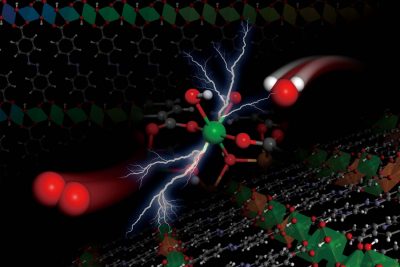
Shuai Yuan, Jiayu Peng, Bin Cai, Zhehao Huang, Angel T. Garcia-Esparza, Dimosthenis Sokaras, Yirui Zhang, Livia Giordano, Karthik Akkiraju, Yun Guang Zhu, René Hübner, Xiaodong Zou, Yuriy Román-Leshkov & Yang Shao-Horn
DOI: 10.1038/s41563-022–01199‑0
Abstract:
The oxygen evolution reaction is central to making chemicals and energy carriers using electrons. Combining the great tunability of enzymatic systems with known oxide-based catalysts can create breakthrough opportunities to achieve both high activity and stability. Here we report a series of metal hydroxide–organic frameworks (MHOFs) synthesized by transforming layered hydroxides into two-dimensional sheets crosslinked using aromatic carboxylate linkers. MHOFs act as a tunable catalytic platform for the oxygen evolution reaction, where the π–π interactions between adjacent stacked linkers dictate stability, while the nature of transition metals in the hydroxides modulates catalytic activity. Substituting Ni-based MHOFs with acidic cations or electron-withdrawing linkers enhances oxygen evolution reaction activity by over three orders of magnitude per metal site, with Fe substitution achieving a mass activity of 80 A g−1catalystgcatalyst−1 at 0.3 V overpotential for 20 h. Density functional theory calculations correlate the enhanced oxygen evolution reaction activity with the MHOF-based modulation of Ni redox and the optimized binding of oxygenated intermediates.
